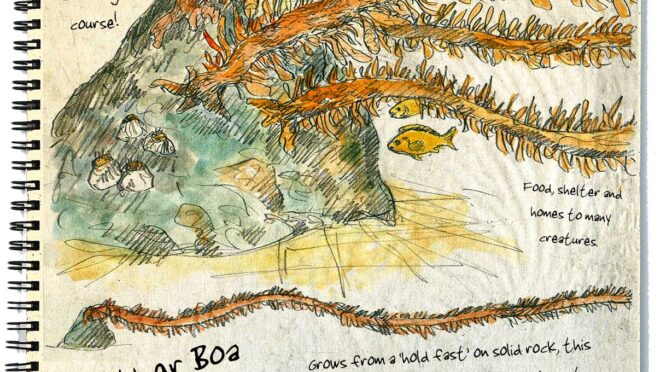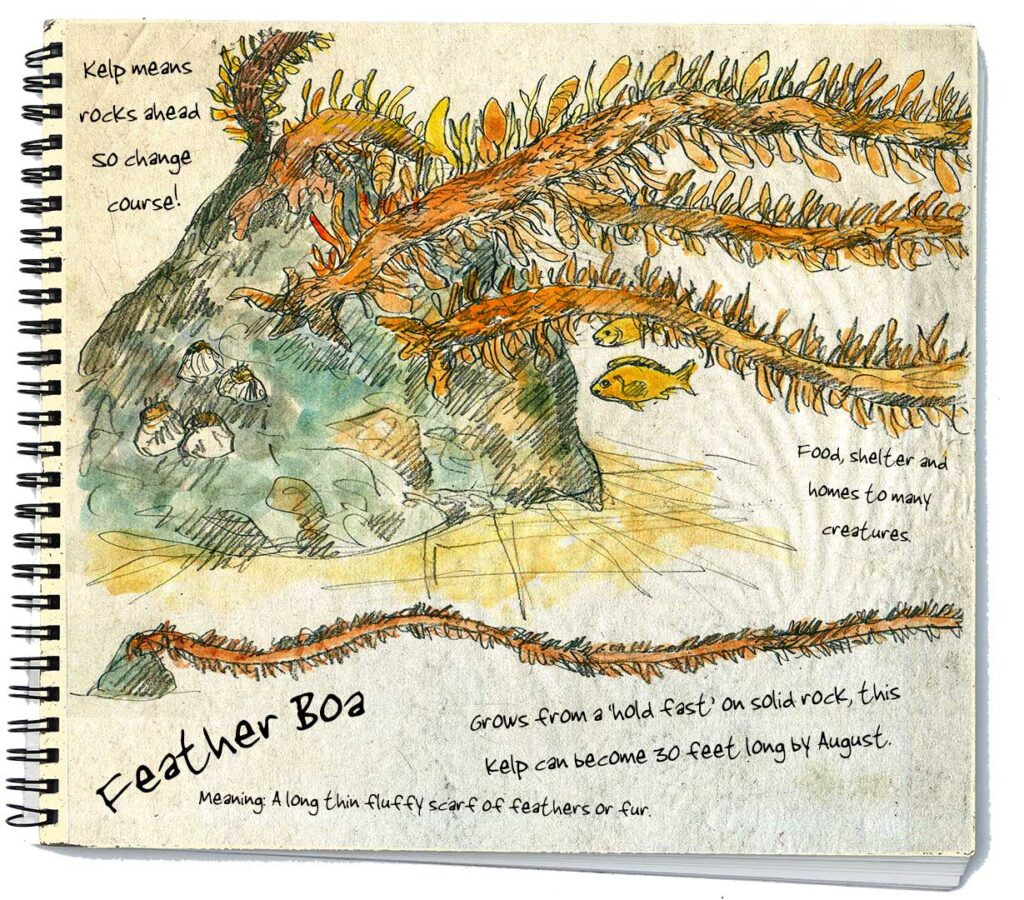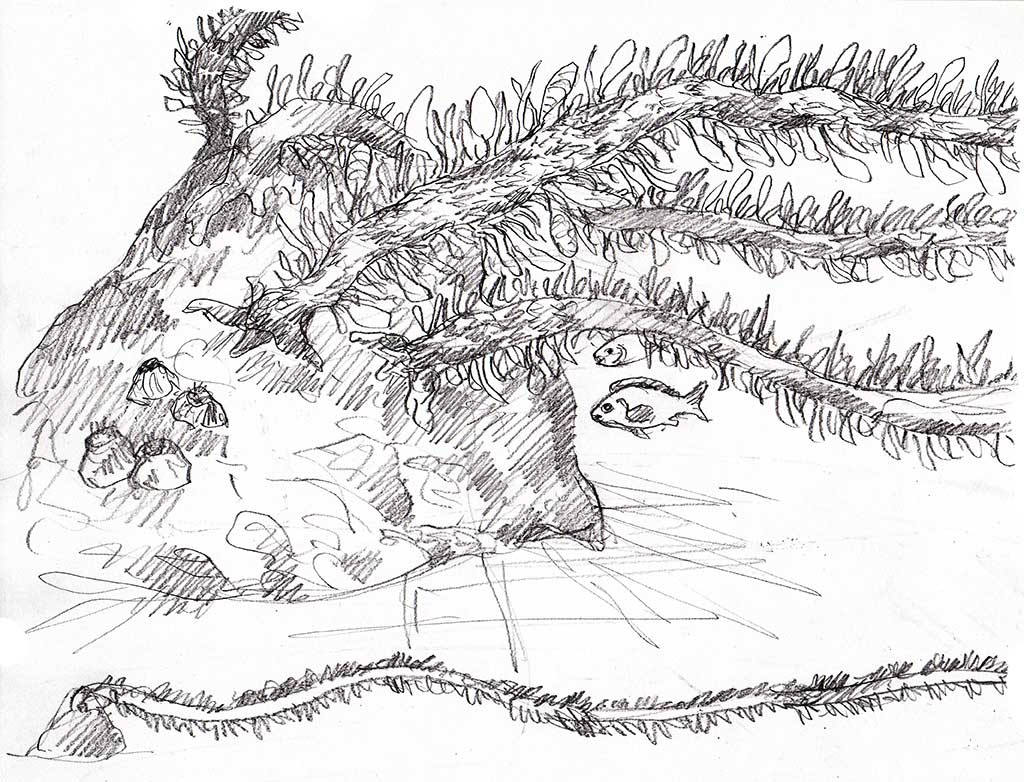Saw this feather boa on a low-tide beach walk. There was a sandy beach, solid boulders, a place where currents flow – and all that equals kelp. There are at least 140 types of brown seaweeds here in the Northwest and they all work in similar ways. The permanent base attaches itself to solid underwater rocks. These are usually on underwater reefs and onshore rocks down to about 50 feet deep. If you see kelp floating up ahead of you, there can only be one reason it’s there – ROCKS!
By summer, this plant joins the other kelps in creating real forests of lush green and brown plants waving in the current. While bull kelp stipes (the trunk) and blades (the leaves) can grow 100 feet a season, the feather boa gets to be about 30 feet long, and in my mind it’s the most beautiful of them all. Based on a single velvet-looking stipe about an inch wide, several different types of blades branch off in wild profusion. There are gas-filled bladders that hold the plant up towards the light like little life jackets, single leaves that look like tiny willow leaves, and skinnier lateral branches that look like twigs with smaller blades at each end. The entire thing is shimmery golden brown. These plants are key habitat to almost countless other creatures and food for many crabs and snails, sea slugs and fish. When you spot feather boas on the beach at low tide, carefully turn over the blades and see what surprises await you. It’s possibly the best reason to come here.
Larry Eifert paints and sails the Pacific Northwest from Port Townsend. His large-scale murals can be seen in many national parks across America, and at larryeifert.com.


